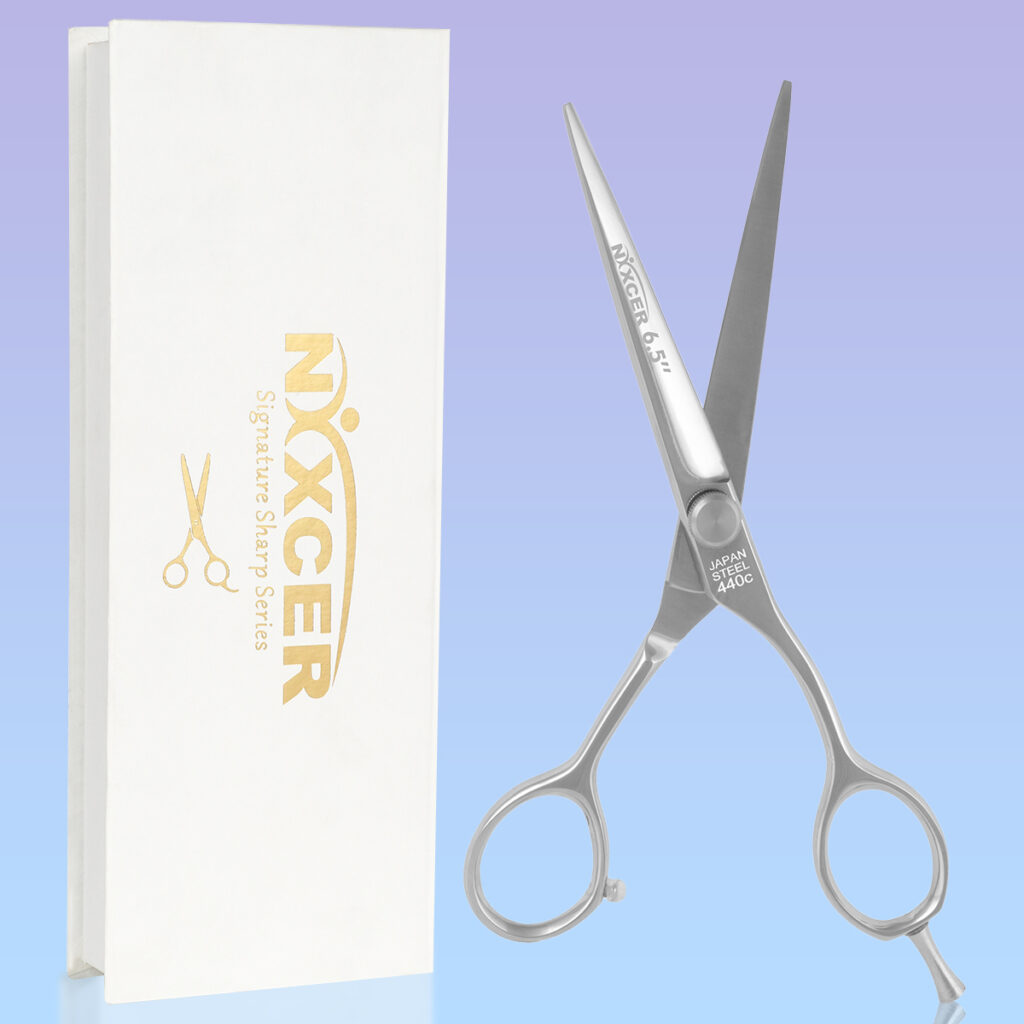Using hair cutting scissors for precision shags requires a combination of skill, technique, and the right tools to achieve a stylish, modern look characterized by layers, texture, and movement. Precision shags are versatile and can be adapted to different hair lengths and types, making them a popular choice for those seeking a trendy, low-maintenance style.
Here’s a comprehensive guide on how to use hair cutting scissors for precision shags.
Understanding Precision Shags
Precision shags are defined by their layered, textured appearance that adds volume and movement to the hair. The key to a successful shag haircut lies in the precision of the cuts, which must be both accurate and well-blended to create the desired look. Shags can range from short and choppy to long and flowing, making them suitable for various hair types and personal styles.
Key Features of Hair Cutting Scissors for Precision Shags
1. Blade Type
Convex Edge Blades: Known for their sharpness and smooth cutting action, these blades are ideal for creating precise, clean cuts that are essential for shags.
Beveled Edge Blades: These blades offer durability and versatility, making them suitable for both slicing through sections and adding texture.
2. Blade Length
A blade length of 5.5 to 6 inches is generally recommended for shags. This length provides the right balance between control and efficiency, allowing for detailed work and quick cutting.
3. Handle Design
Offset Handle: Reduces strain on the hand and wrist, providing better ergonomics for prolonged use.
Crane Handle: Offers an even more relaxed hand position, enhancing comfort and control.
4. Material
High-quality stainless steel or Japanese steel ensures durability and maintains sharpness for smooth cutting action.
5. Tension Adjustment
Adjustable tension systems allow you to customize the scissors’ tension to suit your cutting style, ensuring optimal performance.
Techniques for Using Hair Cutting Scissors for Precision Shags
1. Preparation
Clean and Dry Hair: Start with clean, dry hair to ensure accurate cutting. Wet hair can appear longer and different in texture, which may lead to uneven cuts when it dries.
Sectioning: Divide the hair into manageable sections using clips. This helps maintain consistency and precision throughout the cutting process.
2. Initial Cut
Establish the basic shape and length of the haircut using regular cutting shears. This sets the foundation for the precision work required for a shag.
3. Creating Layers and Texture
Point Cutting: Hold a section of hair between your fingers and cut into the ends at an angle with the tips of the scissors. This technique creates soft, feathered edges and adds texture.
Slide Cutting: Open the scissors slightly and slide them down the length of the hair. This technique is excellent for creating seamless layers and adding movement.
4. Detailing and Refinement
Scissors Over Comb: Use the scissors-over-comb technique to blend and refine the layers. Hold the comb parallel to the scalp and trim the hair that extends beyond the comb’s teeth.
Scissor Pointing: For precise detailing, especially around the face and fringe, use the tips of the scissors to make small, accurate cuts.
5. Blending and Softening
Thinning Shears: To remove bulk and blend different sections, use thinning shears. These shears help create a seamless transition between varying lengths.
Razor Cutting: Although not done with scissors, using a razor can add additional texture and softness to the ends, enhancing the shag’s overall look.
6. Final Touches
After completing the main cut, check for any uneven sections or harsh lines. Use the appropriate shears to make final adjustments and ensure a polished look.
Refining Edges: Use a razor or trimmer for detailing the edges and ensuring a clean, precise finish around the hairline.
Additional Considerations
- Choose ergonomically designed scissors to reduce hand and wrist strain, enhancing control and comfort during detailed work.
- Regular maintenance, including cleaning, sharpening, and proper storage, ensures that your scissors remain in top condition and perform optimally.
- Ensure the scissors fit your hand comfortably. The right fit enhances control and precision, reducing the risk of mistakes and improving overall performance.
Benefits of Using Hair Cutting Scissors for Precision Shags
- The right scissors provide the sharpness and control needed for the clean, precise layers and texture essential in shag haircuts.
- High-quality scissors make the cutting process more efficient, allowing you to achieve the desired style quickly and effectively.
- Ergonomically designed scissors reduce hand and wrist strain, making the cutting process more comfortable and sustainable for stylists.
- Investing in the right tools ensures that you can deliver professional, polished results that satisfy your clients.
Final Thoughts
Using hair cutting scissors for precision shags involves selecting the right tools and employing the correct techniques to achieve a stylish, textured look. By considering factors such as blade type, blade length, handle design, material, and tension adjustment, you can enhance your cutting precision and comfort. With the right tools and practice, you can master the art of precision shags and deliver stunning, professional results every time.



